The best time to visit Elafonisi is undoubtedly during the winter, when summer hordes are replaced by a few hardy visitors enjoying often windswept (but usually empty) beaches and bracing sea air. Since Lynne died, it’s become an annual pilgrimage between Christmas and New Year, finding solace and strength for the year ahead, usually alone, but most recently with Joanna, looking to enjoy a walk en route, and as a keen botanist, hoping to find the rare ‘androcymbium rechingeri’ flowers, endemic to Crete and located only on Elafonisi “island” and Falasarna, and then only in mid-winter.
Elafonisi is 52km from Paleochora, en route passing through a region called “Enneachora” (nine villages), the largest of which is Elos, now with a ‘by-pass’ below it. A little further on is Kefali, where we stopped for coffee and what what we thought would be a short two-hour walk. Described in our book “More Walks from Paleohora” *, the route starts from the far end of the village where there is a park and playground area, right, with a small statue (to Nikolaos Pimplis – 1872-1963 – a Professor of Education and local war-time hero.)
Next to here is a large plane tree ; directly across the road from this is a footpath, little used and often overgrown. This slants diagonally between houses and into olive groves, and appears to end. But persevere, keeping upwards to meet a clearer track which heads towards Papadiana. When it begins to descend, fork sharp left, the track winding down to reach the former (Kefali) village school, with a small church in the pine trees above.
Continue down to reach the main road, and turn right to the tiny slate-roofed church of Agios Vasileios, left of and below the road. Go down the gully below the church to a small concrete footbridge, then turn up right on passageways through Vathi. Continue along these, then down past derelict houses to meet the surfaced road to Tzitzifia at a bridge over the river.
Cross the bridge, walking up out of the village, and when the road bends right, turn left up a steep gully. This soon becomes a narrow path, and beyond the last house turn sharp right, passing above a small chapel in a vineyard, to reach a bull-dozed track. Climb uphill to reach a stone wall at right-angles across this, and walk left in front of the wall, then right, rising again to a wire gate, and through this to a rough road.
Turn left along this, with good views over Vathi, as it descends to the valley, crossing the river at a ford. In summer it will be dry, but after rain you might have to jump over boulders or even wade across. On the far side, walk up to meet a surfaced road, and turn right alongside the river into Pervolia. Opposite the first house you reach – a former mill – look for a track on the left, which you will take later.
Joanna and I, walking fast in late December, reached here in around an hour, and carried on into the village.
An elderly man was depositing rubbish in a skip by the stone bridge .“Yassas,” he greeted us, and the usual questions, “where are you from, where are yougoing?” “Back to Kefali,” we told him, “ and then to Elafonisi.” “You must come come to my house for raki, elate,” he insisted, and despite it only being late morning, we followed him.
He paused at the statue of Anagnostis Skalidis (1818-1901), a ‘pallikari’, a Cretan patriot and freedom fighter of bygone days. “My grandfather,” he told us proudly, and led the way into his house, the upper floor of which he has converted into a museum.
And there we spent a fascinating hour or so, with 87 year-old Zacharias (Skalidis) showing us old photographs, news cuttings, letters, books, weapons used against the Turks and Germans and much more. His voice quavered and eyes moistened when he told us (only in Greek) that his older brother had been executed (at Agia prison in Chania) in August 1944. We signed his Visitors Book and left a small donation, and promised to send copies of the photos we took. And of course we enjoyed the ‘raki’ and biscuits his wife offered us.
The aforementioned track rises gently through olive groves, before a final climb (rear of a building materials yard) to the main road just outside Kefali. Rather later than intended, we drove on to Elafonisi, almost totally deserted, walked across to the “island” in warm afternoon sunshine, and found masses of ‘androcymbium rechingeri’ just beginning to flower ……
* “More Walks from Paleohora” still on sale at ‘To Delfini’ bookshop in the town.

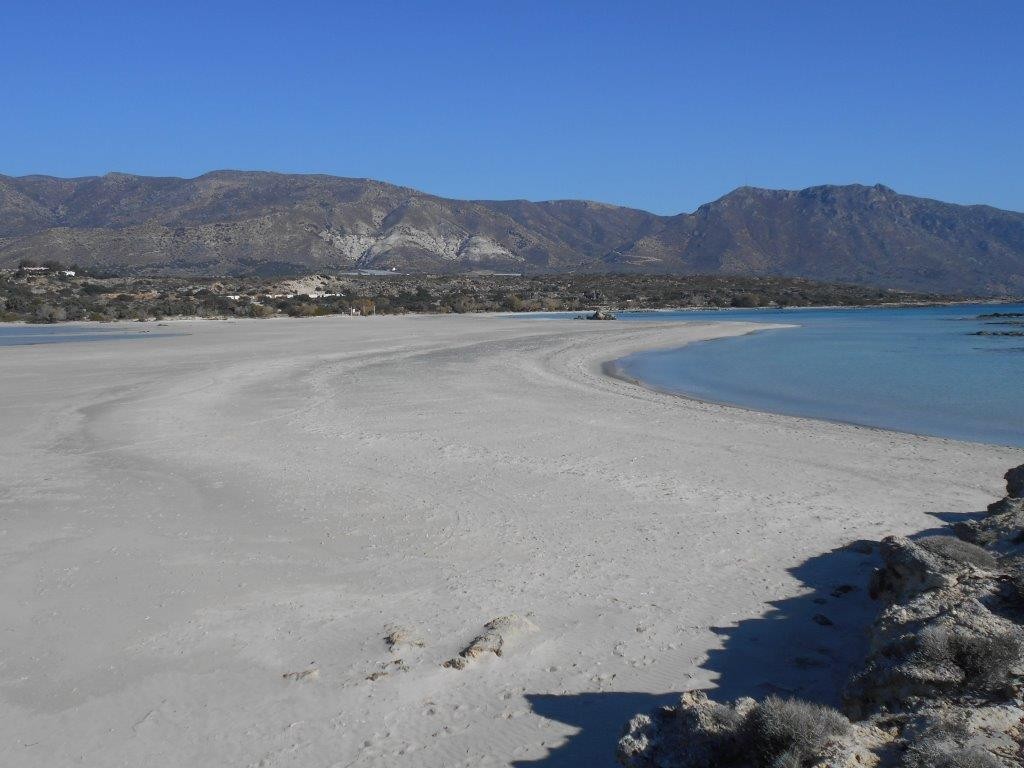
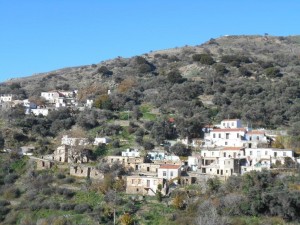

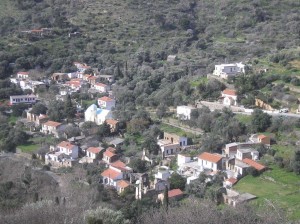
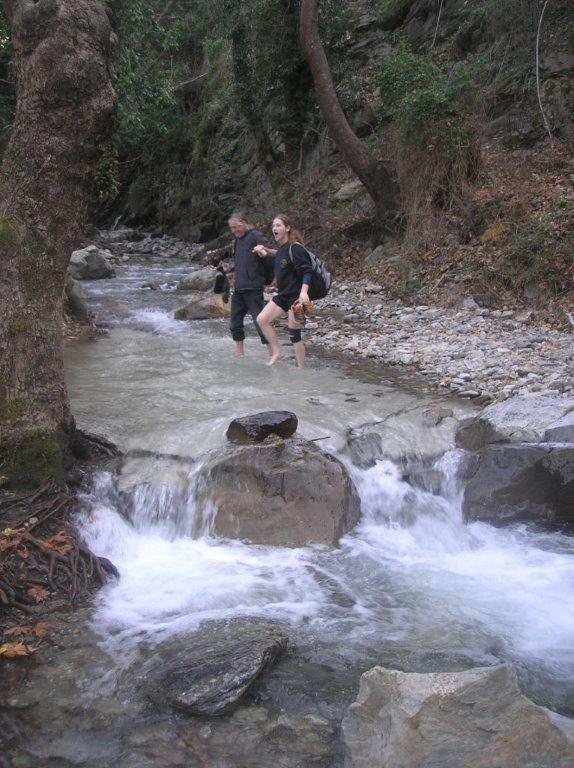
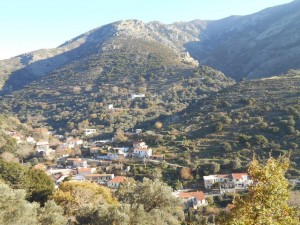
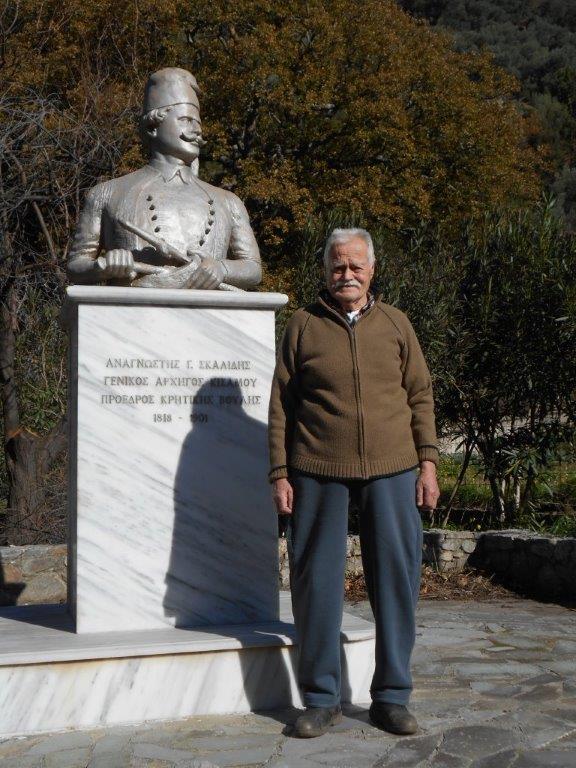
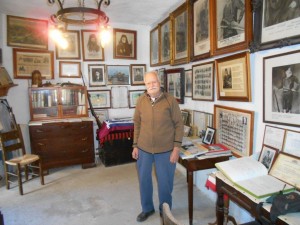
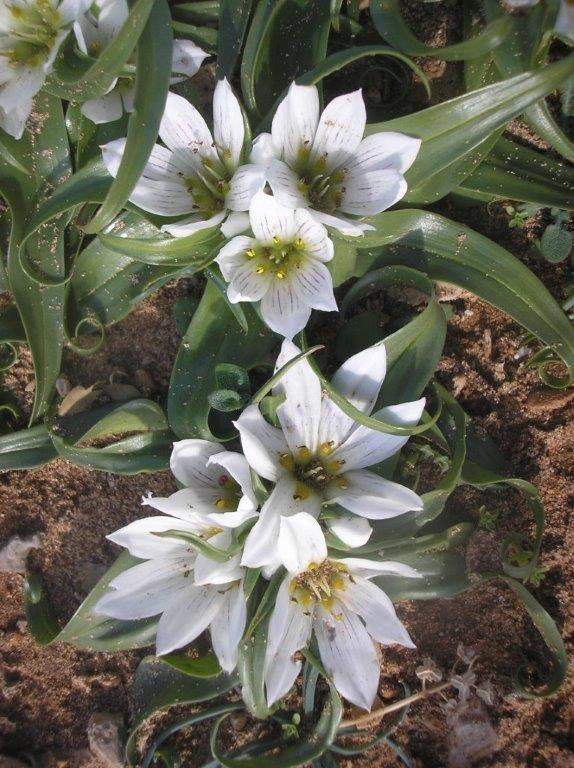

Recent Comments